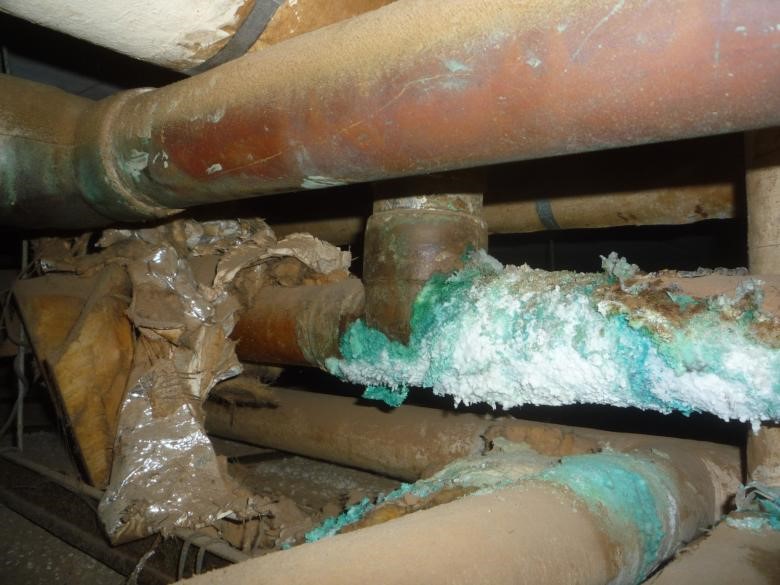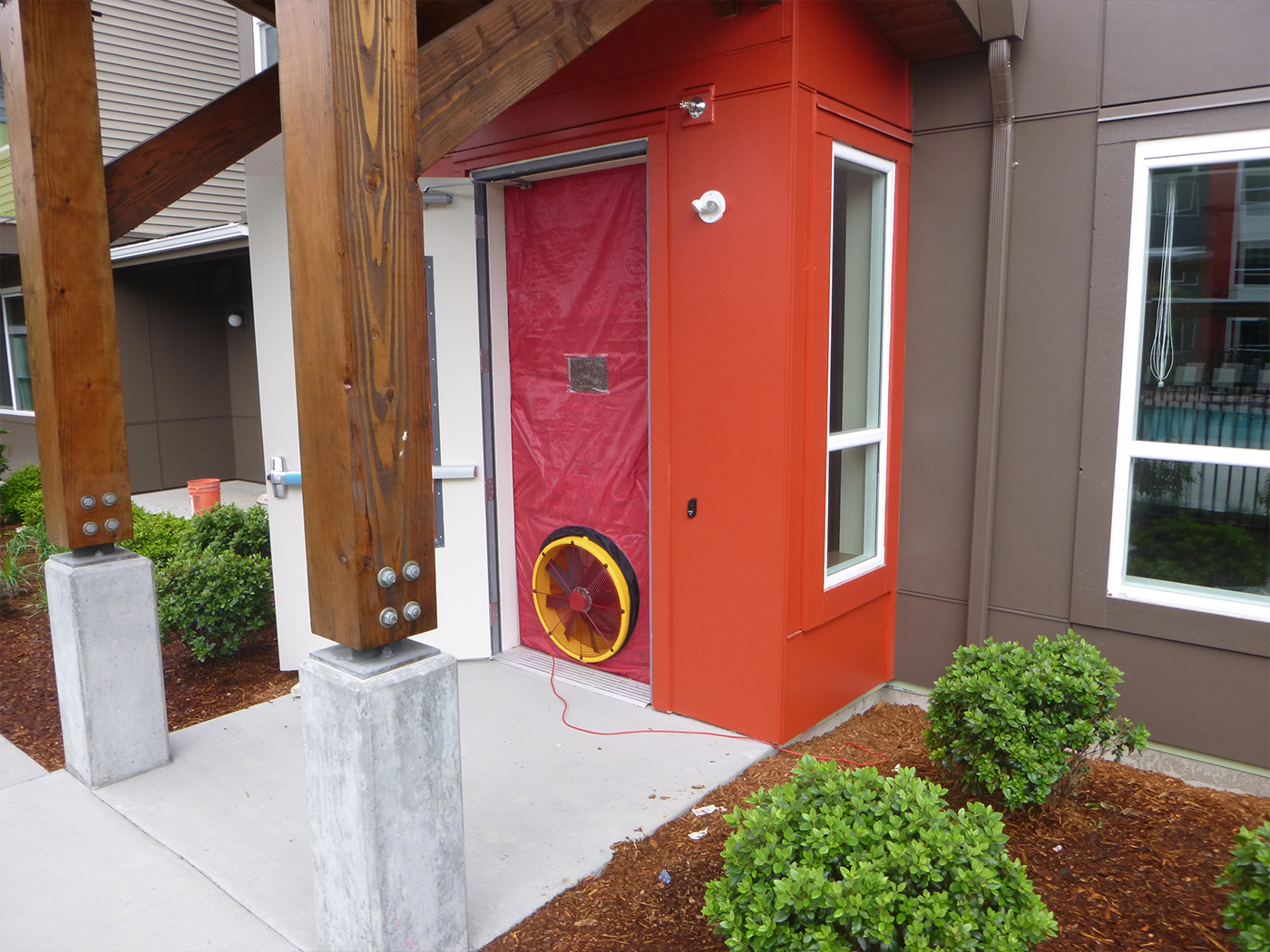If the glass support allows some movement, the likeliness of a thermal crack occurring slightly decreases. In order to properly design for absorptive coatings, an engineer should consider the stresses which will be induced in the glass by the sun and the coating and see if the stresses will likely cause the glass to crack. Also, an engineer can specify the use of heat strengthened glass, a stronger form of glass, which can take higher thermal stresses. Other alternatives such as a reflective, not absorptive coatings should be considered, if applicable.
Causes of Distress and Failure
Like all building elements, curtain walls have their weak points. Knowing what to look for, how to extend the service life of a curtain wall system, and when it’s time to retain a consultant are critical to avoiding costly and disruptive failures. Although issues vary with frame material, construction method, and glazing type, there are some common concerns that design professionals look for when evaluating the condition of a curtain wall system.
Deflection
Aluminum has many advantages as a curtain wall framing material, but it has the distinct disadvantage of deflecting approximately three times as much as steel does for a given load. Even when the amount of deflection doesn’t compromise the strength of the aluminum members, it still may pose a danger in that the glass may be forced out of place. To protect against excess deflection, mullions are extruded into shapes that maximize the area moment of inertia, or resistance of a particular cross-sectional shape to bending stress. Wide-flange elements, such as I-beams, have particularly high area moments of inertia, which is why this profile is used so often in construction.
To reduce deflection in a curtain wall assembly, without adding excess depth to the frame profile, steel reinforcement may be added to aluminum mullions. This method protects the steel from exposure to the elements, while taking advantage of its load-bearing properties. However, water penetration into a steel-reinforced system can also lead to deflection as the steel corrodes and expands, causing the aluminum to bow outward.
Glazing Failure
Condensation on glass curtain walls may be an indication that the relative humidity of the interior is too high, and an adjustment to heating and cooling equipment is necessary. However, condensation may also point to failure of the curtain wall system. If moisture is observed between panes of glass in an IGU, the hermetic seal may have failed, permitting air intrusion into the interstitial space and compromising thermal performance, as well as visibility.
Hairline cracks in glass may indicate excessive thermal loading, particularly if the glass has a coating, such as a low-e film or tint. When the sun strikes the glass, it heats the exposed portion of the pane, causing it to expand. The unexposed edges remain cool, creating tensile stress that can lead to cracking, particularly in glass that has not been heat-strengthened or tempered.
Nickel sulfide (NiS) inclusions can cause glass to shatter suddenly, sometimes years after installation. All glass has microscopic imperfections, or inclusions, that result from the manufacturing process. Generally speaking, these are of little concern. The exception is NiS inclusions in tempered glass, which have led to a number of dramatic glass failures. As glass is heated during the tempering process, NiS converts to a compressed (alpha) phase. When the glass is cooled rapidly to temper it, the NiS lacks sufficient time to return to a stable low-temperature (beta) phase. Over months or years, the trapped NiS transitions to the beta phase, expanding as it does so. The resultant pressure leads to micro-cracks in the glass, which can propagate until the glass structure is thoroughly compromised, and the glass shatters in what seems to be a spontaneous breakage. In an existing structure, ultrasound, laser imaging, or heat soak testing may be used to identify NiS inclusions; however, such test methods can be labor-intensive and expensive. For buildings with multiple glass failures, the pros and cons of full glazing replacement should be weighed against the costs of testing and isolated replacements.
Gasket and Seal Degradation
The image shows gaps created by gasket failure, which admit air and moisture into the system.

A common cause of curtain wall problems is failure of the gaskets and seals that secure the glazing. Gaskets are strips of synthetic rubber or plastic compressed between the glazing and the frame, forming a watertight seal. Gaskets also serve to cushion the glass and to accommodate movement due to wind, thermal, or seismic loads.
As they age, gaskets begin to dry out, shrink, and crack. Subjected to ultraviolet radiation and freeze-thaw cycles, the elastic material degrades, much like an old rubber band. At first, air spaces created by the shrinking, dried gaskets admit air and moisture into the system, leading to condensation, drafts, and leaks. As the gaskets further disintegrate, they may loosen and pull away from the frame. Without the support of flexible gaskets, the glass loses stability and may shatter or blow out. For this reason, it is important to maintain and routinely replace gaskets to keep the curtain wall system operational and safe.
In lieu of compression gaskets, some curtain wall systems use structural sealant, usually a high-strength silicone product, to secure the glass to the frame. Like gaskets, sealants have a finite service life. Signs that it’s time to replace perimeter sealants include shrinking or pulling away from the surface, gaps or holes, discoloration, and brittleness.
Typical EPDM Mullion Gasket Shrinkage
15/16’’ glazing installed produces a loose seal and leaks.

Design or Construction Defects
As with any type of construction, curtain walls are subject to the shortcomings of human capability. Material failure and age-related deterioration may be common causes of curtain wall distress, but many catastrophic and costly failures are attributable to avoidable errors.
Missing, incorrectly applied, or otherwise deficient sealants at frame corners and other intersections can lead to serious water infiltration issues. Failure on the part of the contractor to follow manufacturers’ guidelines, and on the part of the design professional to provide sufficient oversight, can result in water damage that is both difficult to access and expensive to repair.
Flashing detailing, too, requires fastidious attention to prevent leaks at intersections between the curtain wall and other building elements. Without detailed contract documents that fully describe and illustrate perimeter flashing conditions, along with coordination between the curtain wall installer and construction manager during installation, flashings may not be adequately tied or terminated, permitting water to enter the wall system.
Poorly installed trim covers and accessories can pose a danger to people and property below, particularly when adhered using structural glazing tape alone, without mechanical attachments. Construction sequencing is of particular importance, as swing staging and scaffolding can damage or displace mullion covers. Maintenance activities may also be responsible for loose trim elements.
Unforeseen structural interactions among building elements may lead to failure if the curtain wall has not been properly engineered. Inadequate provision for differential movement, as well as incorrect deflection calculations, may be responsible for cracked or broken glass, seal failure, or water intrusion. Glass and framing must be evaluated not only independently, but as a system, with consideration given to the impact of proximal building elements.
Finally, haphazard erection techniques may be responsible for premature curtain wall failure. Any of the above construction defects may result from unskilled and poorly supervised installation. Sloppy sealant application, for example, can block drainage outlets at the glass perimeter, or weep holes, trapping water inside the wall system. Scratches to glass during installation may diminish its strength and durability, and improperly applied window films also may decrease the lifespan of the glass.
Evaluation and Testing
If leaks, deflection, etched glass, or other issues have become a concern, an architect or engineer should conduct a systematic evaluation of the curtain wall system, beginning with close visual inspection. ASTM International provides test standards for the evaluation of air and water penetration, as well as structural performance of glass in curtain wall applications. Tests for water penetration, such as ASTM E1105, use a calibrated spray rack system with a positive air pressure differential to simulate wind-driven rain. ASTM E783 specifies test procedures for determining field air leakage at specific pressures.
Glazing that displays systematic scratches or other defects after installation may need to be evaluated for structural integrity. In such cases, a representative sample of glass units may be removed and tested under laboratory conditions. ASTM E997 is one test method for determining the probability of breakage for a given design load.
Considerations for Rehabilitation
Shrinking of neoprene exterior gaskets is a common concern, and it is not always easy to fix. Although some curtain wall systems, such as those that incorporate pressure bars, may permit gasket replacement without glazing removal, by and large it is difficult or impossible to replace gaskets without removing the glass. Wet sealing, which involves cutting out worn gaskets and adding perimeter sealant, may be an option; however, wet sealing does not generally result in a reliable water barrier, and it creates an ongoing maintenance demand. Where possible, it is best to maintain the original glazing system.
Anodized aluminum frames should be cleaned as part of a routine maintenance program to restore an even finish. For powder coats, fading and wear can be addressed with field-applied fluoropolymer products, although these tend to be less durable than the original factory-applied thermoset coating. Other coatings on the market aim to improve durability, but their track records and maintenance requirements should be considered prior to application.



